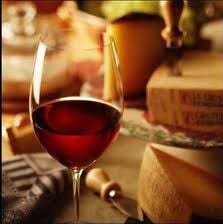When we first started learning about wine, I was always mystified by the range of adjectives that winemakers use to describe the complexities of the juice that I was swirling in my glass. As I sniffed and tasted, I built an arsenal words to associate with different varietals, countries, and regions. There are wines that are fruity, herbaceous, woody, microbiological – the list goes on. Actually, there is a list of 12 main categories on the wine tasting wheel developed by UC Davis professor, Ann Noble. I keep this invaluable tool tucked in my notebook when I attend tastings. Once I decide if a wine is herbaceous or floral, then I can follow the category on my handy wine wheel to decide if it smells like cooked, dried, or fresh herbs and then down one more layer to decide if it is cut green grass, artichoke or tobacco. You get the idea.
So, equipped with my enhanced vocabulary and professionally trained palate, I attended two recent tastings – one for cheese and another for chocolate. These are two ingredients that I incorporate frequently in my cooking and fully enjoy eating, so I felt prepared for the challenge. Cheese tasting uses one more sense than wine – physical touch to describe the roughness, surface moisture, elasticity, and spread-ability of the cheese. As we blind tasted two samples of cheese, I tried to transpose my knowledge and vocabulary of wine to the cheese melting in my mouth. It wasn’t that easy. What words do I use to describe the smell of the rind compared to the cheese under the rind? Is the touch more like a walnut shell or a fresh moist apple slice or something in between? How does it taste? “Yummy! I thought to myself, “I would surely enjoy this with some crusty artisan bread, a glass of Riesling and some toasted almonds.” Ok, back to my vocabulary – nut, caramel, milk, garlic, chocolate, earthy, mold, game. How does the cheese finish?
I then took my new found cheese tasting language and applied it to chocolate. Chocolate tasting uses all 5 senses. Fine chocolate breaks cleanly without crumbling, and makes a sharp sound called the “craquant.” We tasted chocolate from 45-85%, referring to the total percentage of ingredients by weight that come from cocoa. We associated adjectives like dried fruit, smoke, earth, flowery and spicy to each sample. As with wine, we first tasted samples with the higher percentages of chocolate, the most bitter or intense, and ended with milk chocolate which had the largest amount of sugar added.
So commonalities began to emerge: all three taste great together; there are tasting rituals, language and tasting wheels for each; each must be presented at the optimal temperature; each has layers of flavor. Cheese is unwrapped, wine is uncorked. Both products experience changes as they are exposed to air. It is important to cleanse your palate between samples. Neutral bread works well for all three. Water is a great option for cleansing between chocolate tastings.
For industry wine tastings with a large line up, I rotate between whites and reds using a dry acidic white to wake my palate after a lineup of reds. I save dessert wines for last. Timing is also important; I prefer to taste wines mid-morning when my palate is still fresh and my mind not cluttered. I felt some palate fatigue at the 4 p.m. chocolate tasting, not only due to time of day but that tasting was preceded by a 2 hour wine tasting. Generally it is recommended to have no more than 5-9 samples in a line-up, though our industry wine events have upwards of 150 wines. We have worked up to them over the years and have devised ways, in addition to spitting, to trick our palate so that we can discern one from another.
Keep in mind, there is a difference between tasting and consuming. Tasting requires technique and experience and – believe it or not – is sometimes associated with hard work. It is a skill that is honed over time. But these tastings have helped me take the time to enjoy and savor when I am simply consuming, so all the flavors dance on my tongue.
Though you may not have as much opportunity to do formal tastings with a trained professional, you can still take time to think about what you’re eating. Close your eyes and focus on the taste sensation in your mouth with each bite; you’ll be amazed at the nuances you can actually pick up when you focus. So grab a big red, some cheese and a chunk of chocolate then sip, nibble and savor the night away. Salute!


